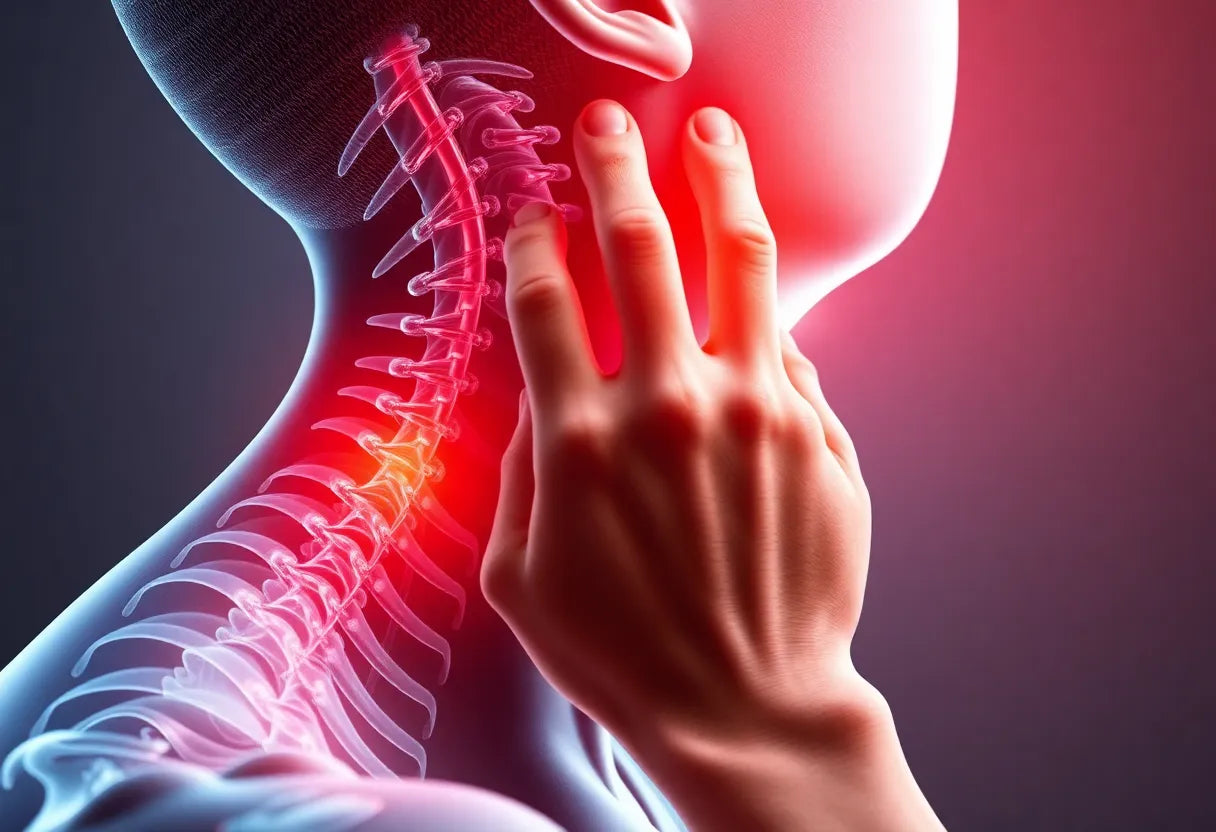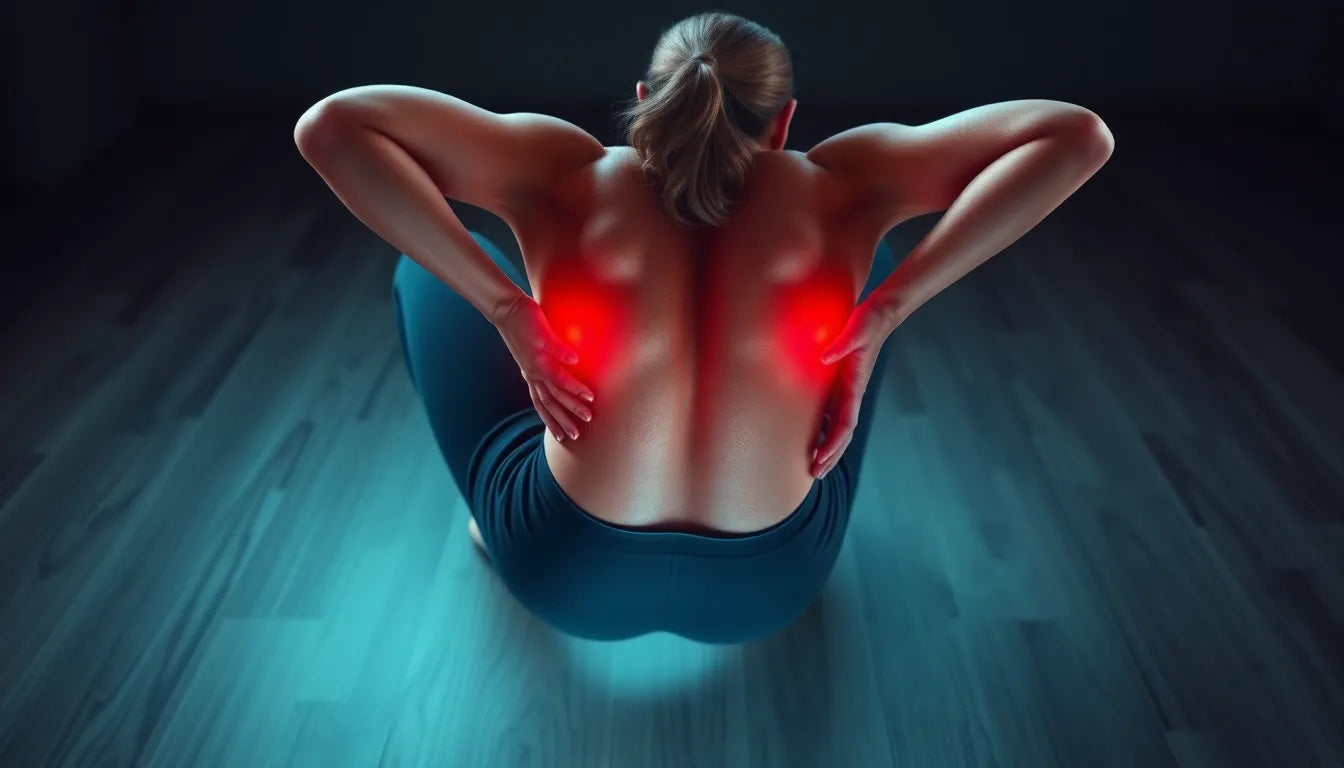In our fast-paced world, it's easy to overlook the subtle signals our bodies send us, especially when it comes to cervical disc disorders. These conditions, affecting the discs in the cervical spine, can have a significant impact on daily life. Recognizing cervical disc symptoms early is crucial for effective management and relief. These symptoms can vary widely, ranging from mild discomfort to severe neurological deficits, making early detection paramount.
Understanding cervical disc disorders
Cervical disc disorders primarily involve two common issues: herniation and degeneration. These conditions affect the intervertebral discs in the neck, which act as shock absorbers between the vertebrae. Over time, wear and tear can lead to degeneration, while sudden trauma or strain may cause herniation, where the disc material protrudes out of its normal boundary. These changes can compress nearby nerves or the spinal cord, leading to a variety of symptoms.
One of the key presentations of cervical disc disorders is cervical radiculopathy. This condition occurs when a nerve root in the cervical spine is compressed, often resulting in pain, numbness, or weakness radiating down the arm. Another serious manifestation is cervical myelopathy, where the spinal cord itself is compressed, potentially leading to more severe symptoms like impaired coordination or balance.
Understanding these disorders is the first step in recognizing the signs and seeking appropriate treatment. As we delve deeper into the symptoms, it becomes clear why early recognition is so important. From neck pain that worsens with movement to radiating pain and neurological symptoms, knowing what to look for can make all the difference in managing cervical disc disorders effectively.
Common symptoms of cervical disc disorders
Recognizing the common symptoms of cervical disc disorders is essential for early intervention and effective management. One of the most prevalent symptoms is neck pain, which often serves as the initial indicator of a problem. This pain can intensify with movement, making everyday activities uncomfortable and challenging. It's important to note that while neck pain is a common sign, it can vary in severity and may be accompanied by other symptoms.
Radiating pain is another hallmark symptom, often resulting from nerve root compression. This type of pain can extend from the neck to the shoulders, arms, or even hands, creating a sensation that can range from a dull ache to sharp, electric-like shocks. This radiating discomfort is a clear indication that the cervical disc disorder is affecting the nerves branching out from the spine.
In addition to pain, individuals may experience numbness and tingling sensations, often described as "pins and needles." These sensations typically occur in the arms or fingers and can significantly impact daily activities, such as typing or gripping objects. The presence of numbness and tingling is a strong indicator of nerve involvement due to cervical disc issues.
Muscle weakness is another symptom that should not be ignored. This weakness can manifest in the arms or hands, leading to a noticeable decrease in grip strength and the ability to perform tasks that require fine motor skills. If the spinal cord is affected, individuals may also experience difficulties with coordination, resulting in clumsiness or problems with tasks like writing.
Advanced symptoms and red flags
As cervical disc disorders progress, more advanced symptoms can develop, particularly if the spinal cord is involved. Myelopathy, a condition characterized by spinal cord compression, can lead to impaired coordination and balance. Individuals may find walking challenging, and their gait may become unsteady. This symptom progression is a red flag that requires immediate medical attention.
In rare cases, severe spinal cord compression can result in serious neurological symptoms, such as loss of bladder or bowel control. These symptoms indicate significant nerve damage and necessitate urgent medical evaluation. Recognizing these red flags is crucial for preventing further complications and ensuring timely intervention.
Symptom patterns by nerve root level
Understanding how symptoms correspond to specific nerve root levels can provide valuable insights into cervical disc disorders. For instance, compression of the C6 nerve root often results in pain and numbness radiating to the thumb and index finger. Similarly, C8 nerve root involvement can lead to symptoms affecting the medial forearm and hand. Identifying these patterns helps in diagnosing the precise location of the issue within the cervical spine.
In addition to the primary symptoms, secondary symptoms may also arise. Headaches, particularly those originating from the occipital region, can be associated with cervical disc disorders. Pain may be aggravated by certain movements or positions, and changes in reflexes might be observed during a physical examination. These additional symptoms provide further context for understanding the full scope of cervical disc issues.
By recognizing these common and advanced symptoms, individuals can take proactive steps towards seeking appropriate medical care and management. Early intervention can significantly improve outcomes, reduce the risk of complications, and enhance overall quality of life for those affected by cervical disc disorders.
Progression and variation of symptoms
Cervical disc symptoms can vary significantly in terms of intensity and progression. Some individuals may experience mild symptoms that remain stable, while others may notice a gradual worsening over time. This progression can depend on various factors, including the underlying cause of the disc disorder, overall health, and lifestyle. In some cases, symptoms may flare up with certain activities or postures, highlighting the importance of identifying triggers and adjusting daily routines accordingly.
For mild or asymptomatic cases, monitoring and conservative management may be sufficient. However, when symptoms escalate or interfere with daily life, seeking professional medical advice becomes crucial. Understanding the potential for symptom variation helps in tailoring treatment approaches to individual needs, ensuring both immediate relief and long-term management.
When to seek professional help
Recognizing when to seek professional help is essential for anyone experiencing cervical disc symptoms. Red flags that necessitate immediate medical evaluation include severe neck pain that does not improve with rest, significant muscle weakness, or symptoms that affect coordination and balance. Additionally, any signs of bladder or bowel dysfunction, though rare, require urgent attention as they may indicate severe spinal cord compression.
Early diagnosis and intervention can prevent further complications and improve treatment outcomes. A healthcare professional can provide a comprehensive evaluation, often involving imaging tests like an MRI, to determine the extent of the disc disorder and recommend an appropriate treatment plan.
Conservative vs. surgical management
Treatment for cervical disc symptoms typically begins with conservative measures. Physical therapy is a cornerstone of non-surgical management, focusing on exercises to strengthen the neck muscles, improve flexibility, and reduce pain. Ergonomic aids, such as supportive chairs or neck collars, can also help alleviate discomfort by promoting proper posture and reducing strain on the cervical spine.

Men's Posture Shirt™ - Black
Improves posture and can relieve neck, back, and shoulder pain. Approved medical device.
In cases where conservative treatments are ineffective, or if the symptoms are severe, surgical intervention may be considered. Procedures such as discectomy or spinal fusion aim to relieve nerve compression and stabilize the spine. These options are generally reserved for individuals with significant neurological symptoms or those whose quality of life is severely affected.
Conclusion and summary
Understanding cervical disc symptoms is vital for early recognition and effective management. From common signs like neck pain and radiating discomfort to advanced symptoms indicating nerve or spinal cord involvement, being aware of these indicators can guide individuals in seeking timely medical advice. Whether through conservative measures or surgical options, addressing cervical disc disorders proactively can enhance quality of life and prevent further complications. By staying informed and attentive to changes in symptoms, individuals can take control of their health and seek the relief they need.
Frequently Asked Questions
What is the most common symptom of a cervical disc disorder?
Neck pain is the most common symptom, often accompanied by radiating pain or numbness in the arms or hands.
How do I know if my symptoms are serious?
Serious symptoms include loss of coordination, severe weakness, and bladder or bowel issues, which require immediate medical attention.
Can cervical disc disorders be asymptomatic?
Yes, many people have disc abnormalities without noticeable symptoms, and these cases often require only monitoring.
What are the treatment options for cervical disc symptoms?
Treatments range from conservative measures like physical therapy and ergonomic aids to surgical interventions for severe cases.
How can ergonomic aids help with cervical disc symptoms?
Ergonomic aids can support posture, reduce strain, and alleviate discomfort associated with cervical disc disorders, aiding in daily activities.

Women's Posture Shirt™ - Nude
Improves posture and relieves tension. For work, exercise, or daily comfort.
Kilder
- UCLA Health. "Cervical Degenerative Disc Disease."
- First State Orthopaedics. "Cervical Disc Disease: Causes, Symptoms & Treatment."
- OrthoVirginia. "Cervical Disc Herniation."
- UF Health. "Cervical Herniated Disk."
- Lake Charles Memorial Health. "What is Cervical Disc Herniation?"
- Ortho Georgia. "Cervical Disc Disease."
- Mayo Clinic. "Cervical Spondylosis: Symptoms and Causes."
- Spine-health. "Cervical Herniated Disc: Symptoms and Treatment Options."
- WebMD. "What is a Herniated Cervical Disk?"
- NCBI. "Cervical Disc Disease."
- Carle Health. "Cervical Disc Syndrome."
- Mayo Clinic. "Herniated Disk: Diagnosis and Treatment."
- Mayfield Clinic. "Cervical Herniated Disc."
- Cleveland Clinic. "Degenerative Disk Disease."
- Top Ortho. "Herniated Disc in the Neck."
- UCSF Health. "Cervical Disc Herniation."























